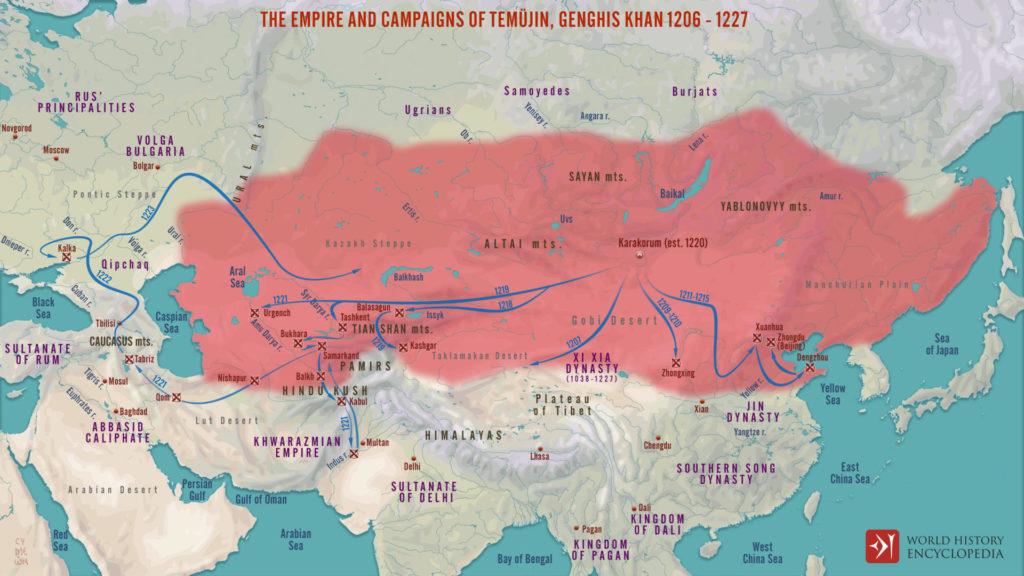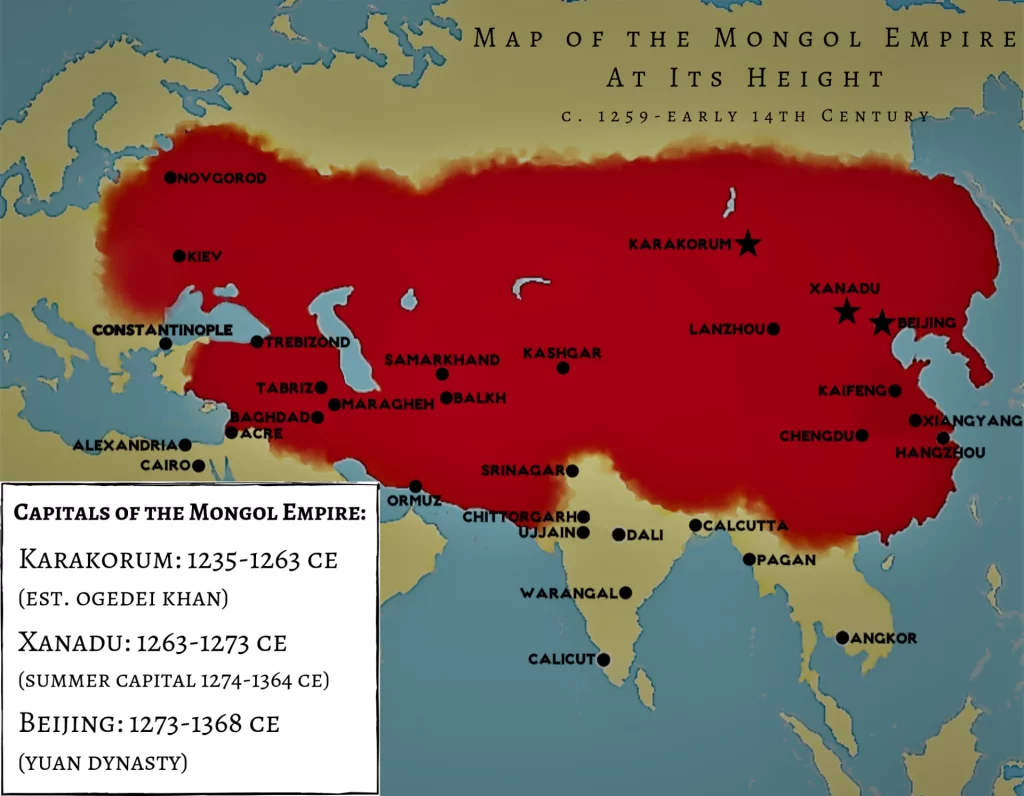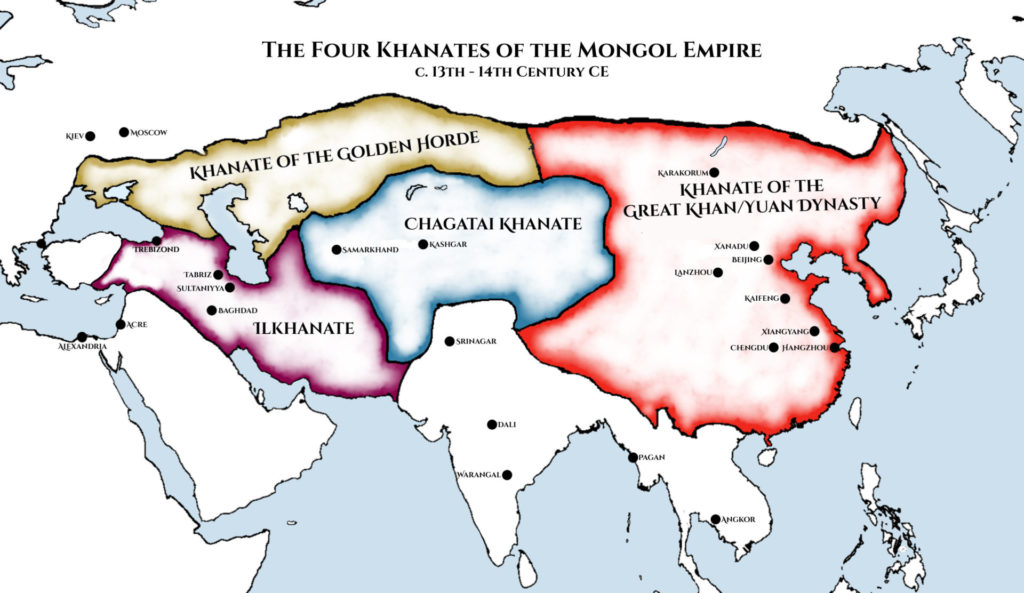Genghis Khan (aka Chinggis Khan) was the founder of the Mongol Empire which he ruled from 1206 until his death in 1227. Born Temujin, he acquired the title of Genghis Khan, likely meaning ‘universal ruler’, after unifying the Mongol tribes. Utterly ruthless with his enemies, countless innocents were slaughtered in his campaigns of terror – millions according to medieval chroniclers.

Mongol Empire expanded rapidly under Genghis Khan’s leadership and then under his successors. By the 1250-1270s, during the reign of Möngke Khan and then Kublai Khan, the empire included the following regions:
- Mongolia: This was the center of the Mongol Empire where it was founded by Genghis Khan.
- China: During this period, most of China was under the control of the Mongol Empire, culminating in Kublai Khan’s founding of the Yuan Dynasty in 1271.
- Korea: After multiple invasions, the Korean kingdom of Goryeo became a vassal state of the Mongol Empire.
- Russia: The Mongols, under the banner of the Golden Horde, controlled vast parts of Russia.
- Central Asia: This region includes modern-day Kazakhstan, Uzbekistan, Turkmenistan, Kyrgyzstan, Tajikistan, and parts of Afghanistan.
- Persia: The Mongols established the Ilkhanate in this region, which included modern-day Iran and parts of Iraq, Turkey, Syria, Pakistan, and other countries in the region.
- Eastern Europe: Mongols had managed to invade and establish dominance over parts of Eastern Europe including regions of modern-day Hungary, Poland, and the Balkans.
- Siberia: The vast northern region of Asia was part of the Mongol Empire.
- Middle East: During the time period specified, the Mongols had invaded parts of the Middle East, including the Abbasid Caliphate based in Baghdad. However, their expansion was halted by the Mamluks of Egypt at the Battle of Ain Jalut in 1260.
It’s important to note that while the Mongol Empire was vast and included many different regions, the degree of control the Mongols had over these regions varied. In some cases, local rulers were allowed to retain their positions and maintain some degree of autonomy as long as they acknowledged Mongol supremacy and paid tribute.

To invade new territories Mongol Empire often incorporated soldiers from conquered peoples into their ranks, utilizing their local knowledge, military skills, and capabilities. The exact practices varied based on the circumstances of the conquest and the local customs of the conquered peoples. In some instances, entire units from conquered nations would be integrated into the Mongol army. These units could retain their original organizational structures, but were typically led by Mongol or Turkic officers. This approach allowed the Mongols to rapidly expand their military forces and capitalize on the unique skills and abilities of conquered peoples.
A prime example is the use of Persian siege engineers during the Mongol invasions of the Khwarazmian Empire and subsequently in other campaigns. The Mongols, originally a nomadic cavalry-based force, lacked expertise in siege warfare, so they leveraged the skills of those they conquered to expand their capabilities.
The system of using soldiers from conquered nations played a significant role in the Mongols’ military successes. It allowed them to command a diverse and flexible army capable of dealing with a wide range of challenges, from the open-field cavalry battles of the Eurasian steppe to the complex siege warfare of the Middle East and China.
Division of Mongol Empire, 1294

Sources: